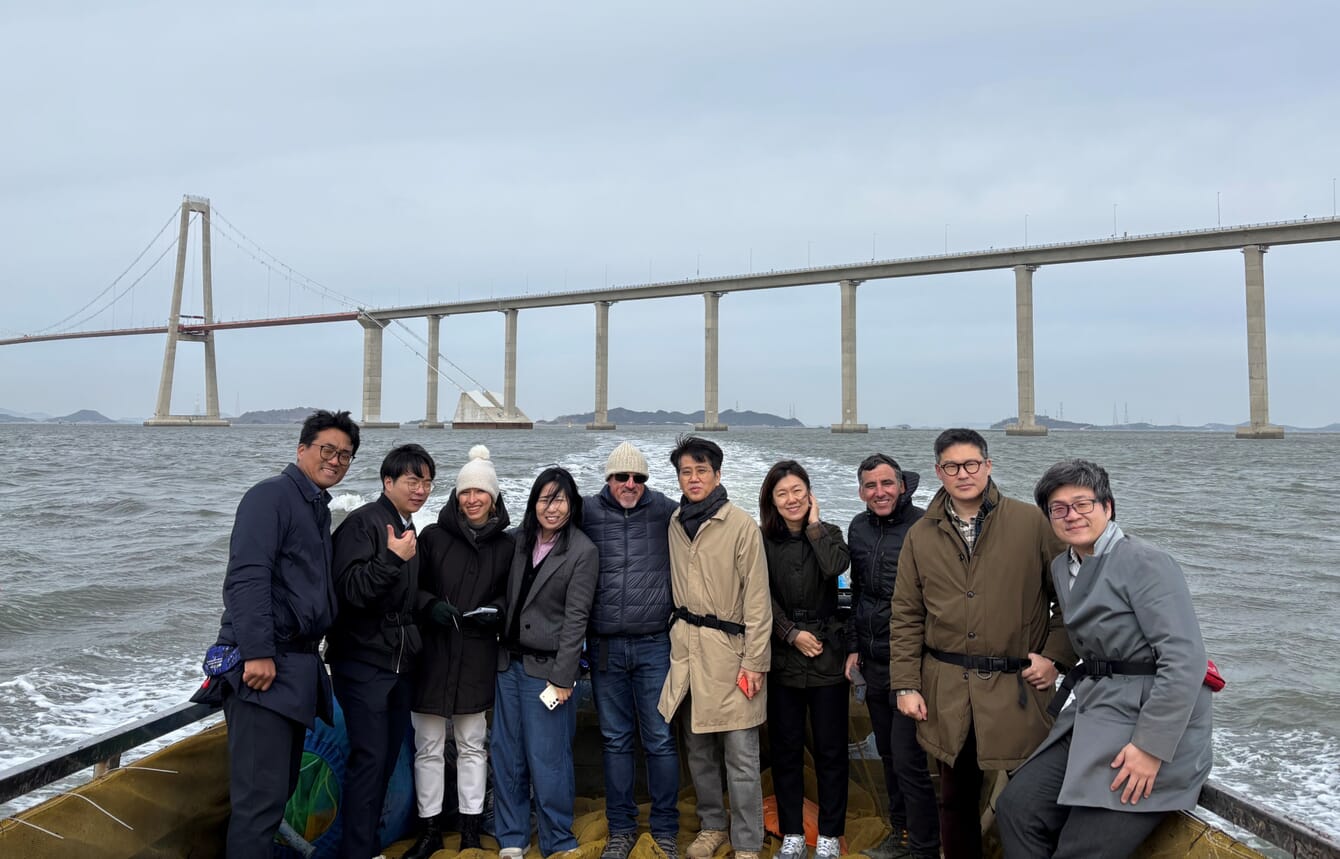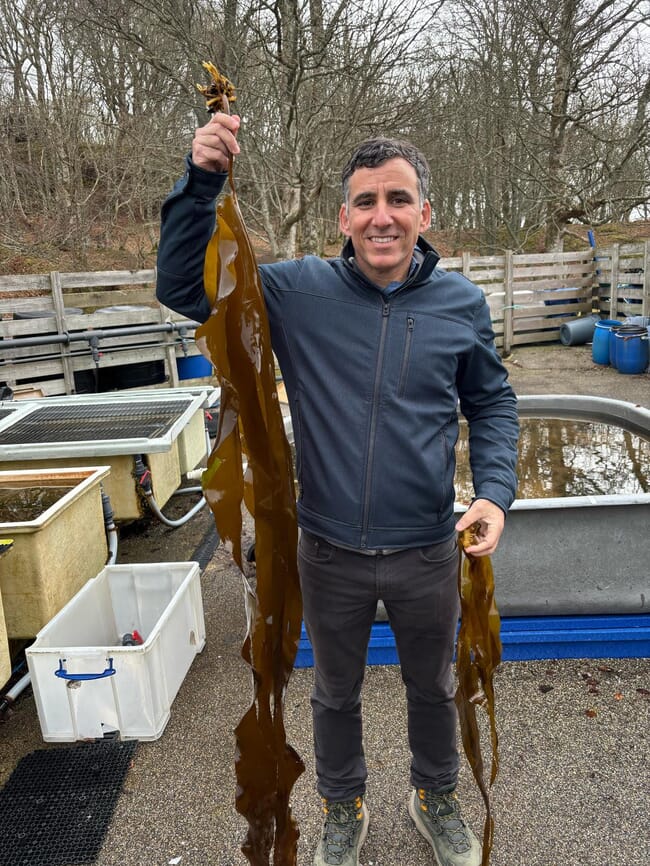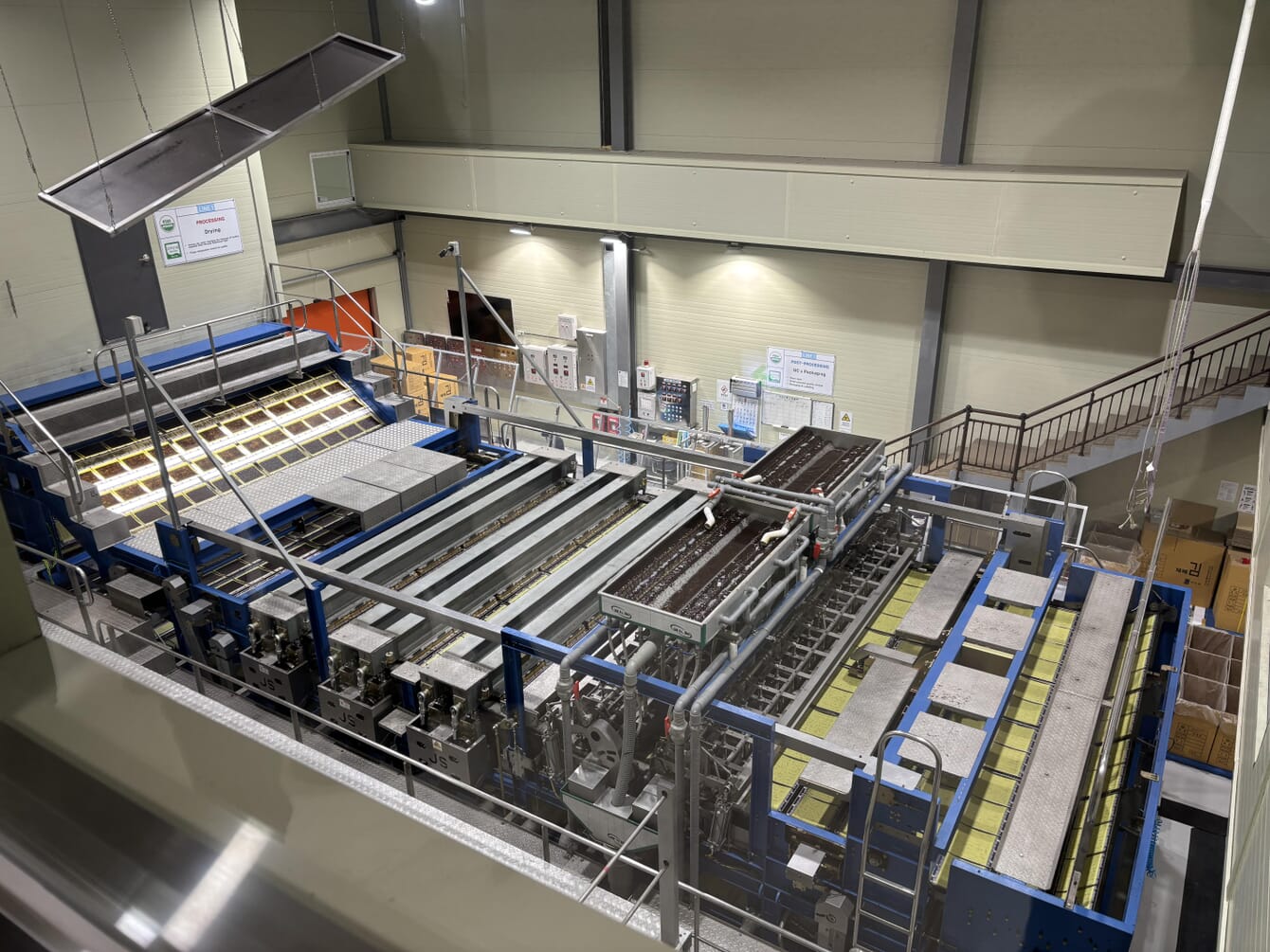
© IBMC
What do ice cream, pet food, makeup, biostimulants and health supplements all have in common?
Seaweed.
Thanks to its ability to act as a binder and provide key nutrients like iodine or nitrogen, plus its quick growth, seaweed is a secret sauce in many products. But the average consumer would never guess that the ocean’s most prolific crop pulls in over $12 billion a year.
Yet for the International Biology and Macroalgae Center (IBMC), $12 billion is too small a number. The global consortium wants to turn seaweed into a $1 trillion annual business.
Thiago Correa, the development director of the Energy & Bioscience Institute (EBI), which was a founding member of IBMC, feels that this “dreamy” number is possible given the recent global growth of the bioeconomy.
“The bioeconomy is forecast to reach about $50 trillion,” by 2050, says Correa. “If you take just a portion of that, like one to two percent,” it is possible, he adds. “The biomass that you're going to be using by 2050 is not going to just be corn… we are also going to include seaweed.”
Created in 2024, IBMC was founded as a partnership between the US, South Korea, Japan, United Kingdom and Canada. Since then, they’ve brought on more countries including Norway, French Polynesia, Israel and Ireland, while France and Indonesia may be joining soon.
In order to be involved, countries must invest between $5 to $10 million into an umbrella programme tied to macroalgae and then connect domestic research institutions to the global consortium. The goal is to create a hub of information and people that all work on seaweed.
The scope of IBMC “goes through the entire value chain – all the way from basic biology research like breeding, economics... to cultivation, harvesting, processing,” explains Correa.
They also look into bio-refinement and focus on engaging communities, as part of the socio-economic outreach.
Their goal is to decarbonise the economy by supplementing industries that rely on petrochemicals with seaweed biomass, focusing specifically on biofuel, fertiliser or feedstock.
Lack of information sharing between top producers and fast followers
Correa estimates that the seaweed industry’s current growth to be at around 5 percent a year – but to hit that trillion number, seaweed production will need to grow exponentially. He says growth can skyrocket if there is better information sharing between countries through IBMC.
Describing seaweed research as a “silo,” Correa said that there is no global network of information sharing that includes “top producers” like China, Indonesia, Philippines, Japan, North Korea and South Korea, with countries that are considered “fast followers” in seaweed, like Norway, Chile, Malaysia, New Zealand or Tanzania, and countries that are “late movers,” like Brazil, the United Kingdom and the United States.
“As the US emerges into a global player in the seaweed space, its nice to have a local source for resources,” wrote Chuck Toombs, founder and CEO of Oregon Seaweed, in an email. A tumble culture red dulse company in the United States, Oregon Seaweed works with IBMC. and Toombs says that the work of IBMC is “really helpful, especially to an emerging technology like land-based seaweed cultivation, which helps to accelerate its adoption all over the world.”

Insights from Indonesia
Another big problem for Western adoption, according to IBMC, is regulation. The group just visited Indonesia and were impressed by how easy the government made it for interested stakeholders and farmers to engage with seaweed farming.
As an island nation, Indonesia boasts the sixth largest exclusive economic zone in the world, a total of 6 million square kilometres. And, in order to boost aquaculture, the government designated 12 million hectares to ocean farming. They made it very easy for farmers to apply for permits, a process that usually takes around two weeks, according to IBMC.
“They streamlined the entire system,” explains Correa. Each potential farm has an ArcGIS tag, which acts like an ID. “If you are farmer, you can just say, ‘I want to apply for this area.’”
And it is working well. Although only 1.6 percent of the country’s 12 million hectares are being used for seaweed production, Indonesia is the second-largest producer of seaweed in the world. Most of their production is red seaweeds, which are being used for carrageenan, which is then sold to China as a raw product.
In contrast, when IBMC researched the typical time to get a seaweed farming permit - research or commercial - they found it took an average of seven years in the United States.
“It's basically business prohibitive,” says Correa. “The Asian countries are way ahead [in seaweed production] and mostly because of policy and regulatory framework. That's the main barrier for the Western countries.”
Although Indonesia boasts a bustling seaweed industry, the visit from IBMC was welcomed by companies who operate in the island nation.
“The IBMC mandate can help decipher a lot of the basic biology of tropical seaweed, a very understudied area, around which an economically viable future blue economy can be built,” wrote Shrikumar Suryanarayan, chairman and managing director of Sea6 Energy, in an email.
Founded in 2010, Sea6 Energy works between India and Indonesia, and operates a mechanised tropical seaweed farm in Lombok, which prodices red seaweeds for biostimulants, while they are also interested in branching out into feedstock and biofuels.
“Having an academic partner like the IBMC concentrate on such an initiative can strengthen the foundation of scientific knowledge on seaweeds in general,” Suryanarayan added.

© IBMC
Insights from Korea
South Korea was a founding member of IBMC and the group recently visited for an information-sharing trip, where Correa was struck by how high the social licence for seaweed was – in part because it is a big part of the nation’s culinary and historical traditions.
“You go to a lot of the meals, you see the table, there's seaweed,” said Correa, which he sees as a huge benefit.
Plus - there is government support.
“The industry is pretty heavily subsidised by the government – all the way from the hatchery, through the cultivation… to the processing and the product development. Government has a hand on the entire value chain,” Correa reflects.
This was particularly evident at the hatchery facilities. Farmers can walk in and buy a pre-seeded net - usually for Pyropia or nori - that is kept frozen at minus 20 degrees Celsius. These facilities are built by the government and farmers can buy nets at any time during the growing season.
Although South Korea’s production remains quite traditional, the country introduced innovations in net systems aimed at preserving seaweed quality. A new technique relies on the use of tidal movements to flip the nets, periodically exposing the seaweed to air in order to prevent epiphytes from attaching which can compromise product quality.
“In South Korea, it's all about the texture, the colour and the quality of the seaweed,” says Correa. “It's very focused on this traditional, this very niche food industry.”
Thanks to this focus on quality, seaweed is sold in South Korea for around $5,000 - $7,000 per tonne, according to IBMC, making it one of the highest premiums for macroalgae.

Red vs brown seaweeds
In terms of becoming a mainstream commodity, IBMC sees much more promise in the tropical red seaweeds Kappaphycus alvarezii (cottonii), Kappaphycus striatum (sacol), Eucheuma denticulatum (spinosum), and Gracilaria than cold water ones, like the Laminariales (kelps).
“The red tropical seaweeds - they are higher in carbohydrates, sugar… that's what you need to convert that into bioproducts,” says Correa. Plus, the 365-day growing season means that, “throughout the entire year, you can have six to nine cycles.”
No matter what type of seaweed and where in the world, IBMC still sees some major hurdles, especially if the industry tries to compete with established commodities like petrochemicals, due to the scale of seaweed production that would be required.
“Exxon produces 4.5 million barrels of oil a day,” says Correa. Using the calculation that one metric tonne of dried seaweed is needed to produce one barrel of oil, and global seaweed production at about 35-40 million metric tonnes, he estimates that using seaweed, the industry could only produce around 4 million barrels annually.
“We are orders of magnitude off,” he observes.
As a result Correa, believes that seaweed can become bigger as a biostimulant, animal feed, biomaterial, and possibly biotextile.
Looking to the future, IBMC is hopeful. They want to try and build a database for seaweed farmers and companies to use to understand business constraints and market, as well as helpful information on how to pick a site to grow seaweed on, using remote sensing or geographic information systems. For these kinds of technical pursuits, Correa feels that the support of over 50 global universities via IBMC is integral.
“We're not here to compete,” said Correa. “We're here to collaborate and facilitate.”




